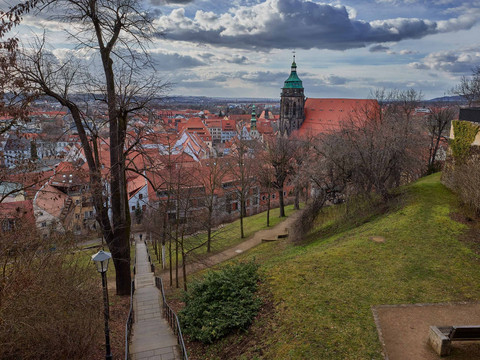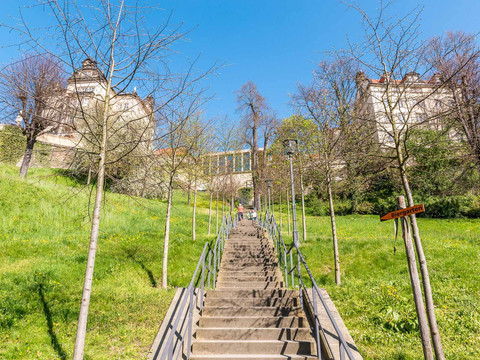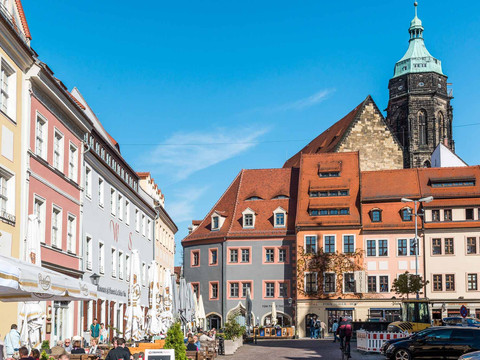The starting point is the market square of Pirna with its richly decorated townhouses from the 16th and 17th centuries. From here, the route leads through Kirchgasse. On the left rises the late Gothic Marienkirche, whose construction began around 1500 and was completed in the early 16th century. Particularly impressive is the richly designed entrance portal on the south side.
At the end of the Kirchplatz, on the right is the Niedere Burgstraße. On the right stands the Erlpeter fountain, a municipal draw-well first mentioned in 1384. The current figure is a replica from 1908. Straight ahead is the street "Am Schlossberg." A few meters further, steps branch off on the left leading up to the Schlossberg.
High above the city towers the Sonnenstein Castle. Originally a medieval fort, it was expanded into a Renaissance castle in the 16th century. From 1811 it served as the "Royal Saxon Healing and Care Institution" – one of the first modern psychiatric facilities in Europe. During the Nazi era, more than 13,700 people were murdered here as part of the so-called "Action T4." Today the castle is renovated and houses the district administration; a memorial site in one part of the building commemorates the victims. From the viewpoints, there is a wide view over Pirna, which, in clear sight, extends as far as Dresden.
Back on Am Schlossberg street, follow the Canalettoweg marked with a red "C" on a yellow background and part of the 8th stage of the Malerweg. The path runs along the old fortress walls, with information boards explaining the history of Sonnenstein.
After the descent, turn onto Am Wasserwerk street, keep right then immediately left again, go under the railway line and reach the Elbe. Turn left following the riverside path downstream.
At the height of today's ferry terminal stood until the 19th century the Pirna Elbe gate, one of the medieval city gates. It served as a motif for Bernardo Bellotto (called Canaletto) and Caspar David Friedrich.
At the ferry terminal, go left through the underpass. Then the Grohmannstraße leads to the Klosterhof with the StadtMuseum Pirna, which shows changing exhibitions. Past the museum, you get back onto Dohnaische Straße. At the corner stands out the Engelserker, a figure-adorned bay window from the 17th century, whose current form dates from the 19th century. Here the path leads left into Lange Straße, then right into Badergasse, which leads directly back to the market square.












